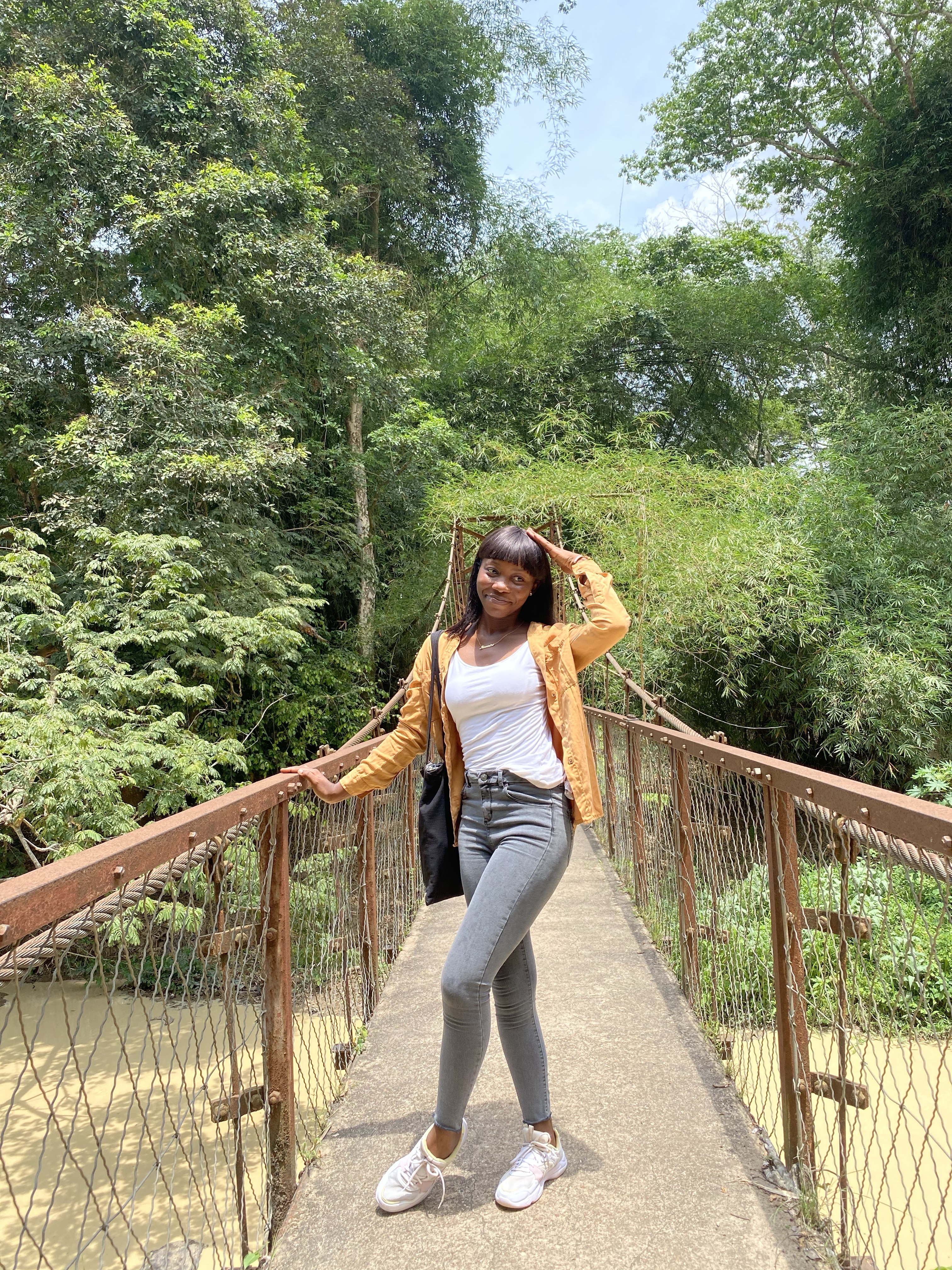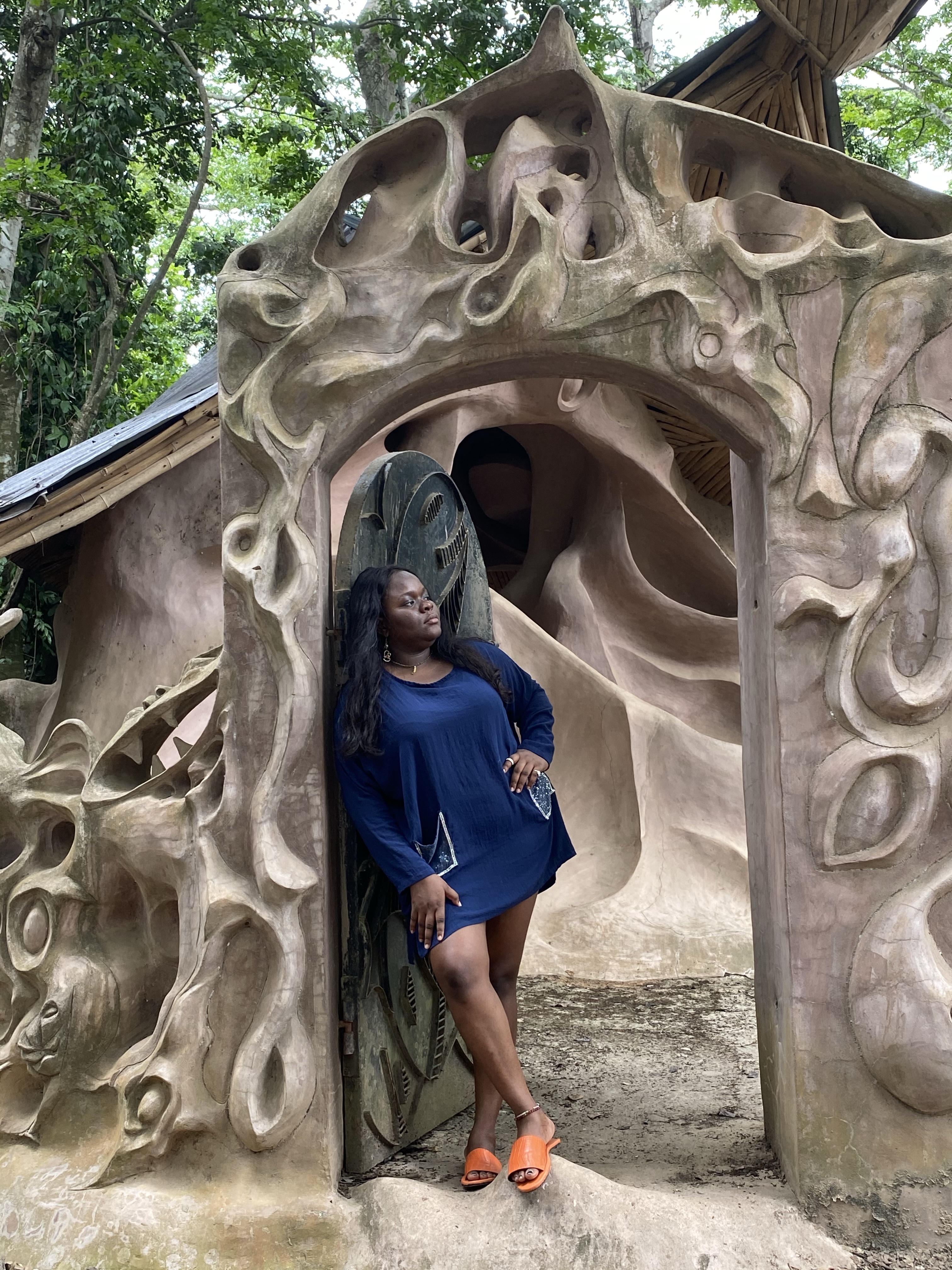It’s been my goal to visit more places in Nigeria and I am glad my trip to Osogbo, Osun state was a fruitful one as I used the opportunity to visit The Osun Osogbo Grove which is an UNESCO WORLD HERITAGE SITE.

The osun osogbo grove is said to be one of the last remaining sacred groves in Yoruba land. It is over 400 years old.
How to Get to Osun Osogbo Grove
Getting to the Osun Osogbo Grove is easy as it is located in the capital of Osun state and is a very popular site. The Goddess Of Osun Festival, a very popular festival that attracts worshippers from all over the world holds annually. Hence, motorists are very knowledgeable about getting visitors to the grove. If you are coming from Lagos, you can drive or get a commercial bus from Ojota or Oshodi bus park, I advise you go with the former as the latter is sometimes rowdy.
If you are coming from other parts of Nigeria or even outside of Nigeria. You have to arrive in Lagos or Ibadan first as there’s no airport in Osun state. Directions to Osun Osogbo Groove on Google Maps.

Arriving at Osun Osogbo Grove
We arrived at our destination in less than 30 minutes from our hotel, Nike Guest House. At the entrance to the Osun Osogbo Sacred grove, there’s a notice board containing details about the Osun Osogbo Grove including the Do’s & Don’t of the Osun-Osogbo Sacred grove.

Next stop was the payment point. There is a flat entrance of 1000 Naira/$2 per person. There are additional fees for taking pictures with mobile phones or Camera which range between 500 – 2000 Naira.
After we paid this fee, as we went into the groove, we met a group of women who were worshippers of the goddess Osun. They demanded money before allowing us proceed into the part of the grove that housed the shrine and another group of women demanded money at the entrance to the part leading up to the bridge. They were rude and clearly out to extort visitors. We managed to bargain and gave them 500 Naira only. We were a group of four.
Exploring The Osun-Osogbo Sacred Grove
The grove rightfully deserves it’s spot as a world heritage site. I don’t think I can adequately put into words how amazing this place was. Think of being transported through history via art works and perhaps that will give you a feel of how the grove felt like. It also had an eerie feel but it wasn’t anything major. It is a sacred groove after all.
We couldn’t visit the shrine or go close to the Osun River because women who are on their period at the time of visit aren’t allowed to visit this part of the grove.
We also learnt women looking to conceive and have babies often come to offer sacrifices and supplications to the Osun Goddess. Through out our time there, we saw different sacrifice spots where broken eggs and other items were placed.
Our driver also told us the yellow-like colour of the Osun River was because it contained gold. I don’t know how true this is and honestly I didn’t research his claims but it’s what he believes.

He also told us about Susanne Wenger, the late priestess of the Osun Shrine. Before our visit, Christopher had told me a bit about the foreigner who later became the priestess, having our driver mention it made me more inquisitive. I spent the rest of the day after our visit to the Osun Osogbo grove reading about the Australian Born artist and Illustrator, Susanne Wenger, also known as Adunni Olorisha who fell in love with the Yoruba worldview, culture and religion and dedicated her life to serving the goddess and restoring the art works in the grove.
If you require the services of a tour guide, please make inquiries at the payment point. We went without one, so I don’t know the process of getting one.
If you decide to visit the Osun Osogbo Grove after reading this post, please tag me to your photos and videos on social media. I will love relive the experience through you.












